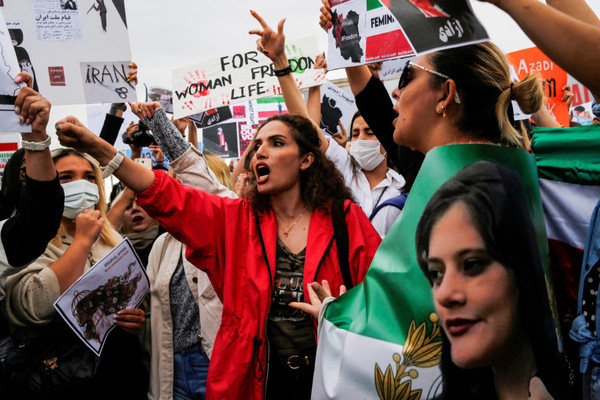
The Choice of My Clothes1)
On September 17, news emerged that a woman died in Iran after being arrested by the police for not wearing a hijab properly. Hijab is the clothing worn by Muslim women on their heads. The hijab, which is a garment worn to avoid hot sunlight and sandstorms in the Arabian Peninsula, existed even in pre-Islamic times. It was also a means of protecting women from rape and looting during frequent tribal wars in the Middle East around the 7th century. However, wearing a hijab was not mandatory as it is now. Before the Islamic Revolution, women were free to wear what they wanted. Some women wore religious clothes, but others chose to dress in the western style. However, when the Islamic Revolution broke out in 1979 and the Islamic theocracy was established, the Islamic religious leader took up the highest power. The Iranian government made it mandatory for all women to cover their entire bodies with hijabs and loose clothes when in public places. This regulation, 'hijab law,' is enforced by the morality police. Their main task is to guide women to wear 'appropriate' attire according to the regulation of the Iranian government. They examine whether too much hair can be seen outside of the hijab, whether their clothes are tight, and whether their makeup is too much. Women who violate the rules can be sentenced to fines, whipping, or prison sentences. As such, the Islamic Revolution limited women's freedom of clothing, and over time, the perception that the hijab is not protecting but suppressing women spread.
Under these regulations, Iranian women are calling for the abolition of the mandatory wearing of hijabs and the removal of morality police that regulate women's clothing. The protest started in Saqez, a city in Iran, when a video of women taking off their hijabs went viral on social media. Protesters chanted "women, life, and freedom," claiming equality, and some Iranian men also took part in protecting them. As the protests intensified, the Iranian government began to suppress them by force, causing many casualties. An Iranian woman participating in the protest said, "The police kept shooting tear gas. I tried to run away, but I was cornered and beaten. They called me a whore and asked me if I came out on the street to sell myself." This shows how the armed crackdown of Iran's anti-government protests is dangerous for the protesters. About the incident, an anonymous artist criticized the government's crackdown by posting photos of red-colored fountains in downtown Tehran. In addition, the young Iranian singer Shervin Hajipour released a song containing lyrics of the voice of anger toward the government and this song became an unofficial anthem of Iran's protests. Iran's hijab protests are a part of the process of restoring women's freedom in their lives and their rights, and the number of voices calling for the Iranian government to accept their demands is increasing.
1) David Gritten, Oliver Slow, "Iran Unrest: Women Burn Headscarves at Anti-hijab Protests", BBC, September 21, 2022


